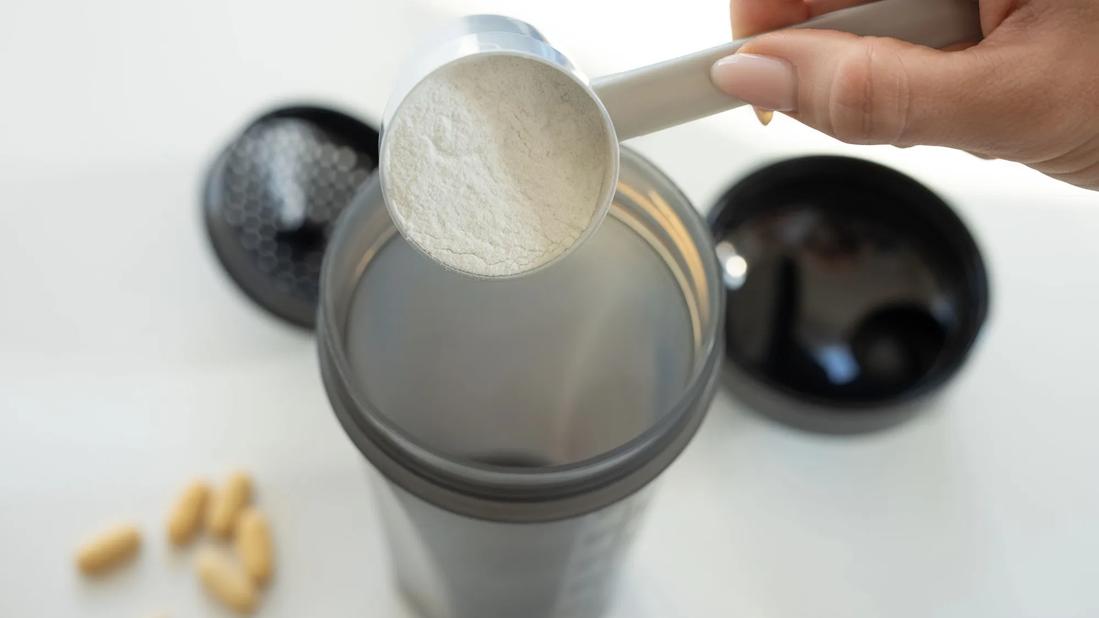The method can bring faster strength gains, but it’s not necessary

A desire to increase strength, muscle mass and athletic performance often drives those who take creatine supplements. Hitting those goals more quickly fuels the concept of “creatine loading.”
Advertisement
Cleveland Clinic is a non-profit academic medical center. Advertising on our site helps support our mission. We do not endorse non-Cleveland Clinic products or services. Policy
This shortcut calls for consuming higher amounts of creatine for five to seven days when you start taking the supplement. The overload phase is designed to saturate muscles with energy for eventual workout gains.
It’s a common tactic used to jumpstart a strength-building push — but it’s also a plan that draws plenty of questions given how much it exceeds standard dosage recommendations.
So, is creatine loading safe? Let’s check with exercise physiologist Chris Dempers, ACSM EP-C.
Creatine is a compound made from amino acids, the building blocks of protein. Your body uses it to boost levels of adenosine triphosphate (ATP). These energy-carrying molecules fuel muscles on a cellular level.
As you might imagine, fitness-focused folks interested in building strength might want MORE creatine in their system to power workouts. It’s often why they take creatine supplements.
As you start creatine supplementation, a loading phase allows your body to take in extra amounts of the compound to build an energy inventory. Essentially, you’re creating a power supply ready to be tapped.
“The more creatine you have in your system, the more ATP you can make to maximize your workouts,” explains Dempers. “Loading gets your body as much creatine as it can hold in a short amount of time.”
Advertisement
The window of opportunity for creatine loading comes when you begin taking the supplement to raise creatine levels. “It allows you to make some big gains quickly,” says Dempers.
A loading phase typically lasts five to seven days. Daily creatine dosage during this time typically ranges from 20 grams to 25 grams. (For perspective, the non-loading dosage is usually 3 to 5 grams per day.)
It’s important to divide your loading dosage into multiple servings spread throughout the day. That way, it’s a little less dumped into your system all at once, which can minimize potential issues. (More on that in a moment.)
Once you reach a creatine saturation point, taking the recommended daily supplement amount (3 to 5 grams) is usually enough to help maintain higher creatine levels as you work toward strength-building goals.
Dempers recommends checking the label of your chosen creatine supplement for guidance on loading. “Go by their instructions, which have been put through the paces,” he says.
Creatine loading can be done safely and effectively — but that doesn’t mean it’s the best choice for everyone. “It can be safe for the right individual,” says Dempers, “but it can come with side effects.”
Higher amounts of creatine may cause:
A few case reports suggest that consuming higher amounts of creatine may put added stress on your kidneys, which process (or metabolize) creatine in your body. But various clinical trials show limited risk or reason for worry.
Still, it’s best to take precautions. “Talk to your doctor or healthcare provider before starting on creatine to go over any potential health issues or concerns,” advises Dempers.
While creatine loading is an option, it’s not necessary to reach that creatine saturation point to push strength gains. Taking the smaller recommended supplement dose will get you there, too. It just takes longer.
“Loading gives you an immediate spike, but then you level off,” explains Dempers. “You’ll eventually catch up if you’re taking the smaller daily dose.”
A slow-and-steady method also limits the risk of the previously mentioned side effects.
Stick to your normal strength-training routine during a loading cycle as you start taking creatine. “Stay consistent with what you’re doing — and that includes the weight you’re lifting during your sets,” Dempers advises.
Strength gains from creatine won’t come instantly, after all. You’re not going to see a massive uptick in your bench press or squat max within the five- to seven-day loading period. It’ll take a few weeks.
Advertisement
So, avoid the temptation to start adding plates to the weight bar just because you’re loading.
“Anytime you try to do things too fast, you run the risk of injuries,” he adds. “Studies show that creatine can help muscles get stronger, but it still takes time. Your body will tell you when it’s ready.”
Research shows the potential benefits of taking creatine supplements, especially for athletes. “Creatine is a performance substance,” states Dempers. “It might be able to give you an extra edge or push to get to another level.”
But that goal can be reached with or without loading.
Advertisement
Learn more about our editorial process.
Advertisement

The meat-based elimination diet restricts important food groups — like fruits and vegetables — that keep you healthy

The vitamins, minerals and other nutrients in the food you eat are essential for a healthy heart, but supplements are another story

Early research shows that this supplement may help, but more studies are needed

The natural supplement may help with weight loss, lower blood sugar and protect your heart

Over-the-counter pills, powders, extracts and tinctures can interact with other medications and cause unexpected side effects

There are plenty of claims that the pigment can improve acne, promote weight loss and more — but the research is lacking

This sticky phytocomplex may have health benefits — but the science and safety data is lacking

The pros and cons of taking prenatal vitamins when you’re not pregnant depend on your age, ethnicity and health

The ‘sunshine vitamin’ is found naturally in some fish and is added to other foods

Autism and ADHD often go hand in hand, giving rise to the term AuDHD

The Yuzpe regimen is less effective than other forms of emergency contraceptives, and it’s associated with more side effects